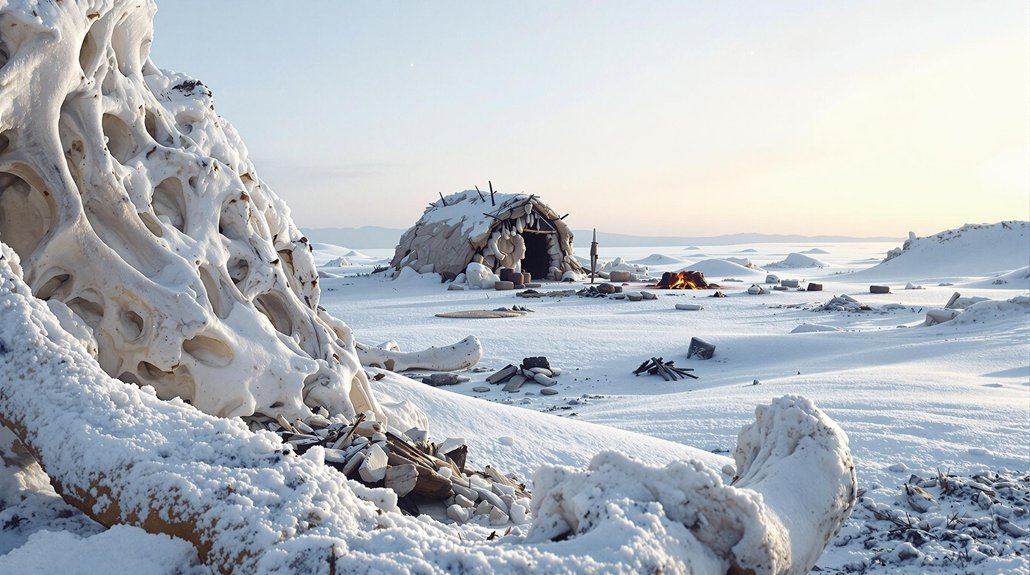Ice Age humans survived brutal -30°C winters 25,000 years ago through remarkable adaptations. They crafted tailored clothing from animal pelts, built shelters with hearths, and used bones as fuel when wood was scarce. They dug “ice cellars” into permafrost for food preservation and developed specialized hunting tools. Despite harsh conditions that would overwhelm modern humans, they created rich cultural traditions including cave paintings and trade networks. Their resilience reveals surprising survival capabilities.
Survival was the ultimate challenge for humans during the Ice Age. Around 45,000 years ago, modern humans arrived in Europe after migrating from Africa through the Near East. They faced brutal winters with temperatures averaging -20 to -30°C. These early Europeans encountered Neanderthals, who disappeared about 40,000 years ago after several thousand years of coexistence and interbreeding.
Ice Age Europeans endured frigid winters while sharing territory with Neanderthals before the latter disappeared through extinction and absorption.
The genetic makeup of these Ice Age people shows they belonged to a single founding population between 37,000-14,000 years ago. The groundbreaking genetic study increased the number of analyzed ice age hunter-gatherers by tenfold. They carried 3-6% Neanderthal DNA, higher than the approximately 2% found in people today. Natural selection worked against many Neanderthal genetic variants over time. Curiously, these earliest Europeans didn’t contribute much to present-day European populations.
Ice Age humans developed remarkable survival skills. They crafted tailored clothing from animal pelts and built shelters with hearths. The eruption of the Phlegrean Fields around 38,000 BCE may have created an ecological crisis that challenged their survival. They cleverly used bones as fuel when wood was scarce. To preserve food, they dug “ice cellars” into the permafrost, storing meat and bones for later use. Their hunting skills allowed them to track and capture highly mobile herds across vast landscapes.
Despite harsh conditions, Ice Age Europeans created rich cultural traditions. They painted on cave walls, carved figurines, and developed sophisticated tools. They established trade networks spanning hundreds of miles, exchanging materials and ideas. Their tool technology evolved from handaxes to small, specialized implements including projectile points and slender flint blades.
The coldest period, known as the Last Glacial Maximum (25,000-19,000 years ago), nearly caused extinction for Western European populations. As climate warmed after this period, humans recolonized abandoned areas. Population numbers grew, and previously isolated groups reconnected. Around 14,000 years ago, a new genetic component related to Near Eastern populations appeared in Europe.
Eventually, around 8,500 years ago, the warming climate enabled a gradual shift from hunting and gathering to farming, setting the stage for more complex societies to develop.









